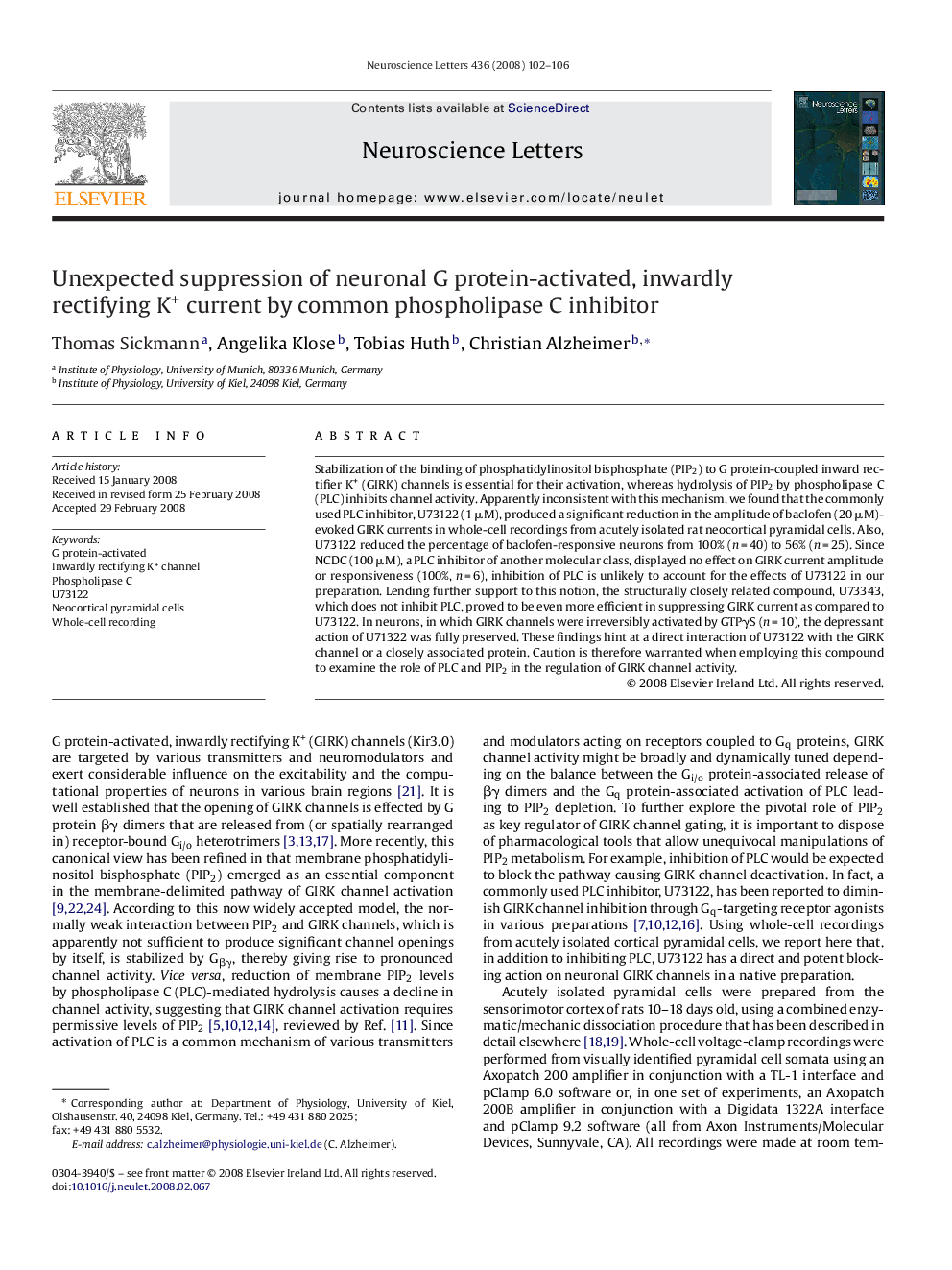| کد مقاله | کد نشریه | سال انتشار | مقاله انگلیسی | نسخه تمام متن |
|---|---|---|---|---|
| 4348519 | 1296894 | 2008 | 5 صفحه PDF | دانلود رایگان |

Stabilization of the binding of phosphatidylinositol bisphosphate (PIP2) to G protein-coupled inward rectifier K+ (GIRK) channels is essential for their activation, whereas hydrolysis of PIP2 by phospholipase C (PLC) inhibits channel activity. Apparently inconsistent with this mechanism, we found that the commonly used PLC inhibitor, U73122 (1 μM), produced a significant reduction in the amplitude of baclofen (20 μM)-evoked GIRK currents in whole-cell recordings from acutely isolated rat neocortical pyramidal cells. Also, U73122 reduced the percentage of baclofen-responsive neurons from 100% (n = 40) to 56% (n = 25). Since NCDC (100 μM), a PLC inhibitor of another molecular class, displayed no effect on GIRK current amplitude or responsiveness (100%, n = 6), inhibition of PLC is unlikely to account for the effects of U73122 in our preparation. Lending further support to this notion, the structurally closely related compound, U73343, which does not inhibit PLC, proved to be even more efficient in suppressing GIRK current as compared to U73122. In neurons, in which GIRK channels were irreversibly activated by GTPγS (n = 10), the depressant action of U71322 was fully preserved. These findings hint at a direct interaction of U73122 with the GIRK channel or a closely associated protein. Caution is therefore warranted when employing this compound to examine the role of PLC and PIP2 in the regulation of GIRK channel activity.
Journal: Neuroscience Letters - Volume 436, Issue 2, 9 May 2008, Pages 102–106